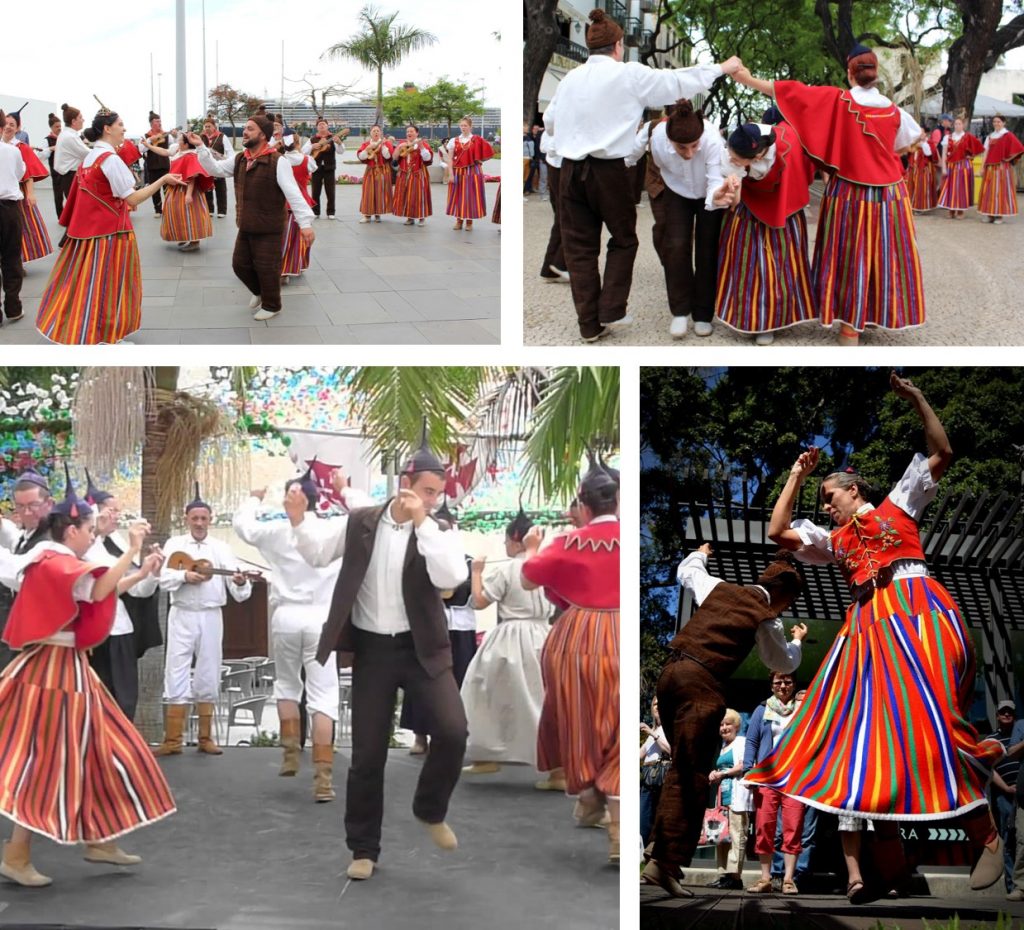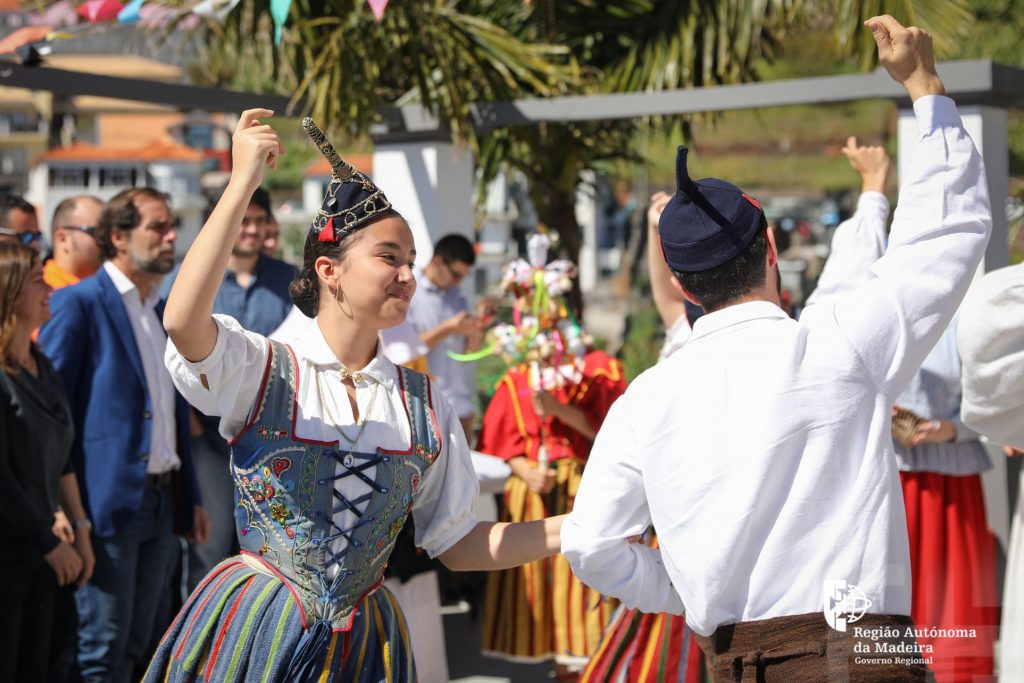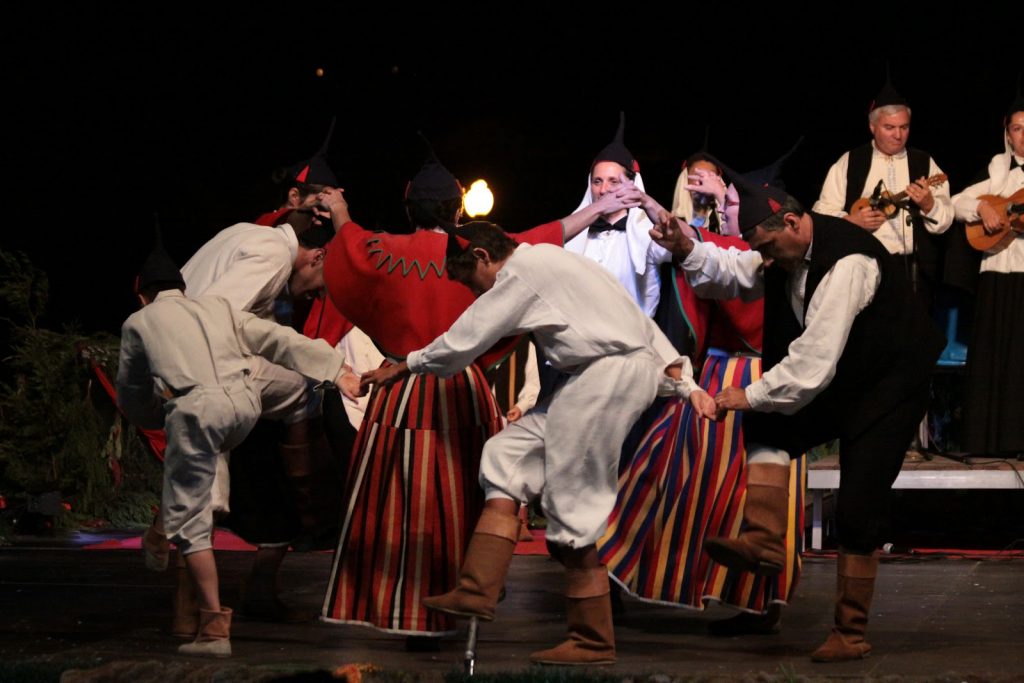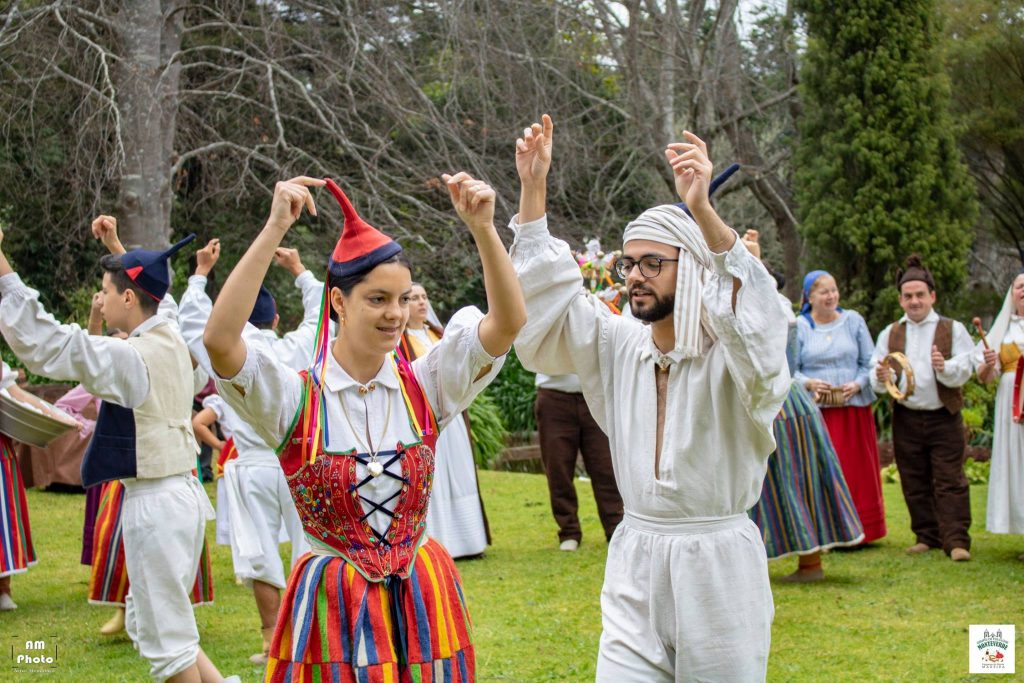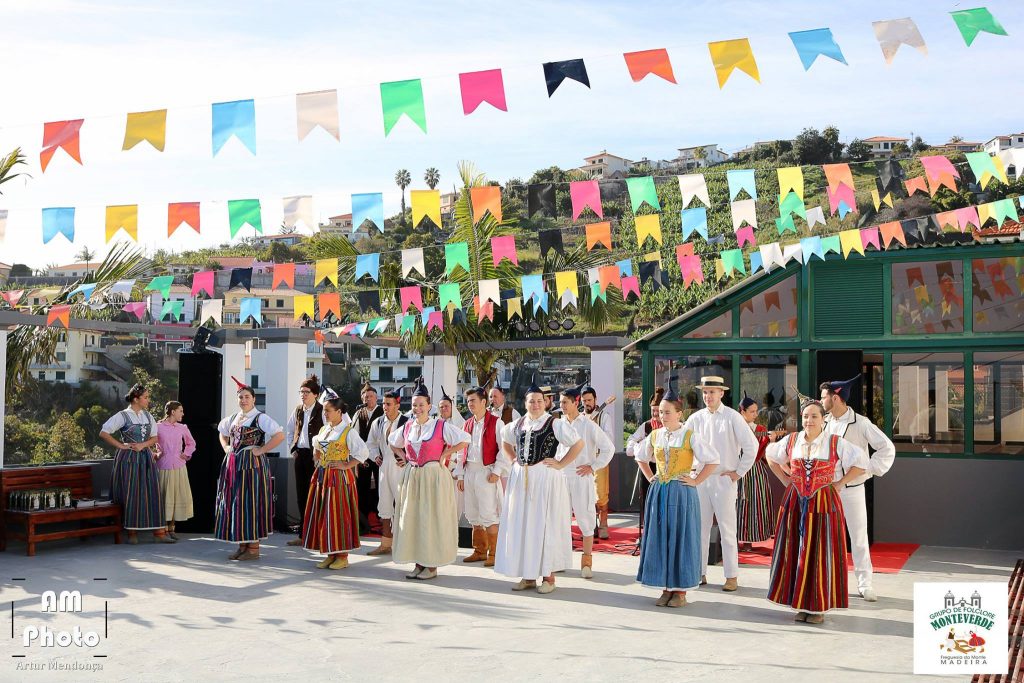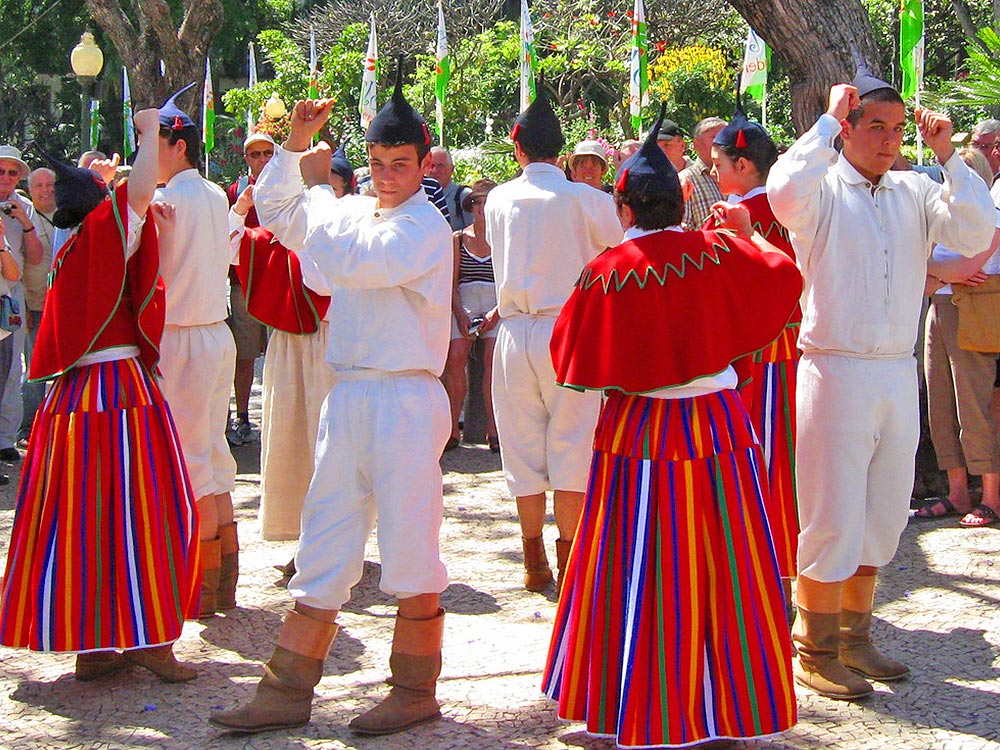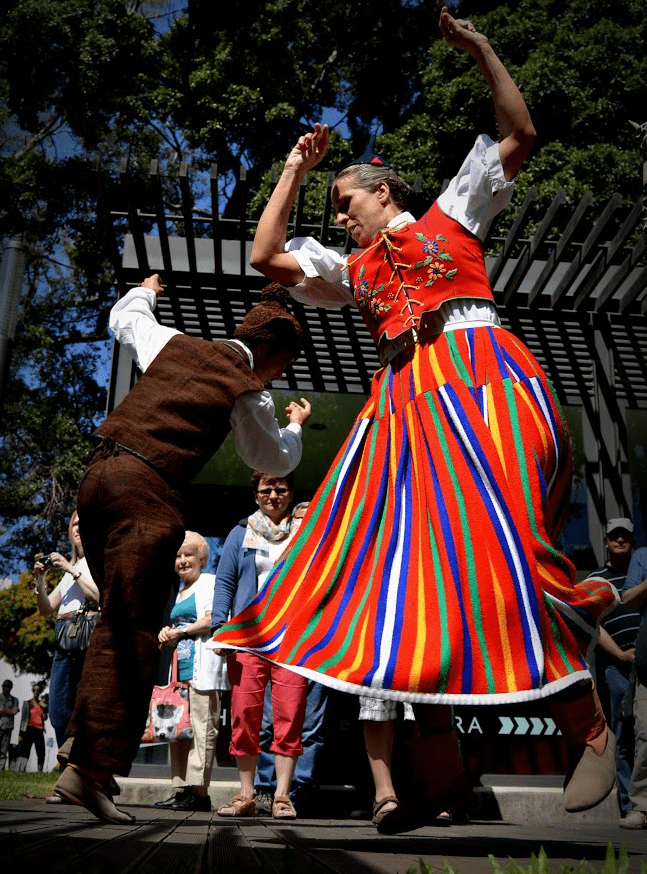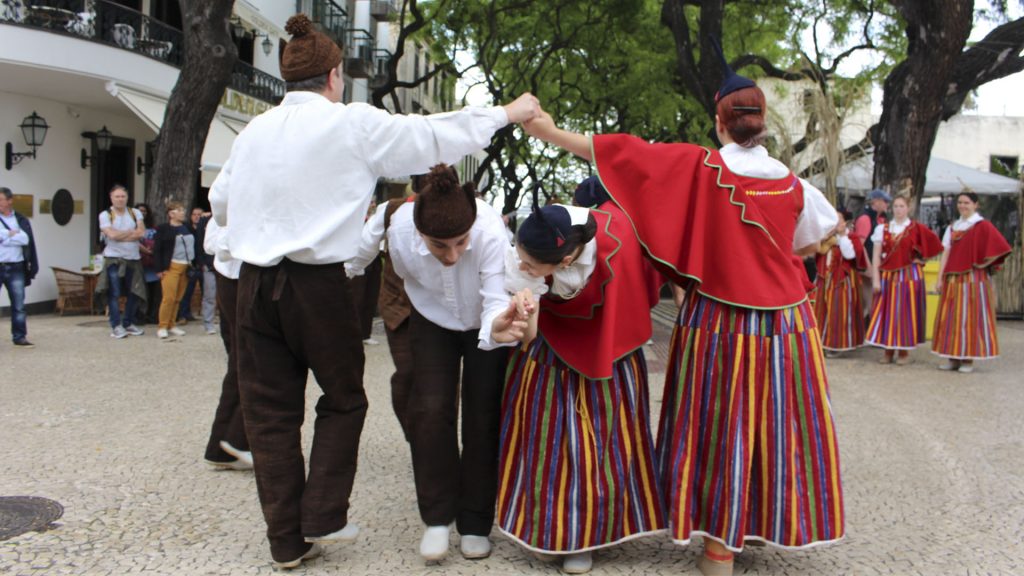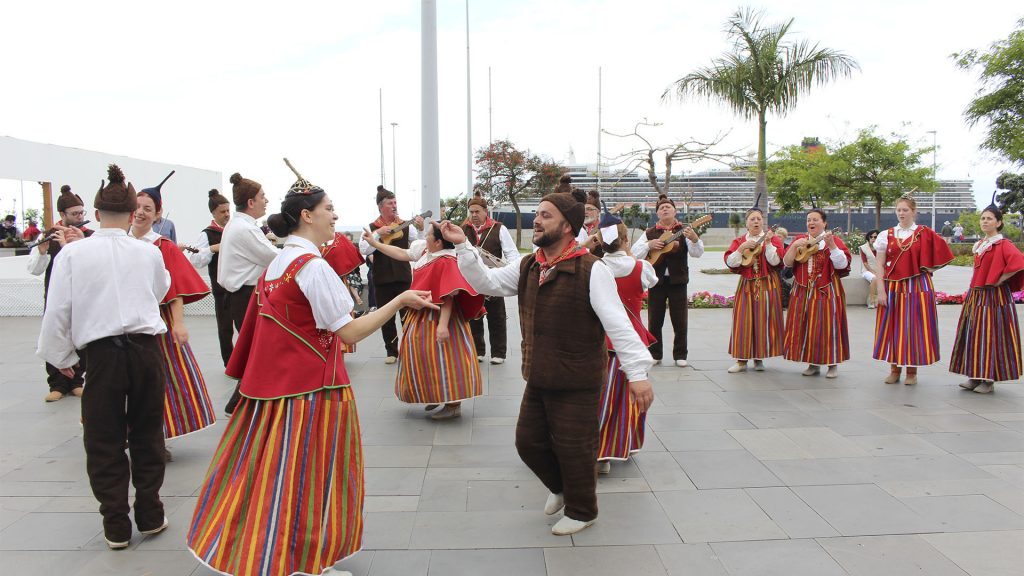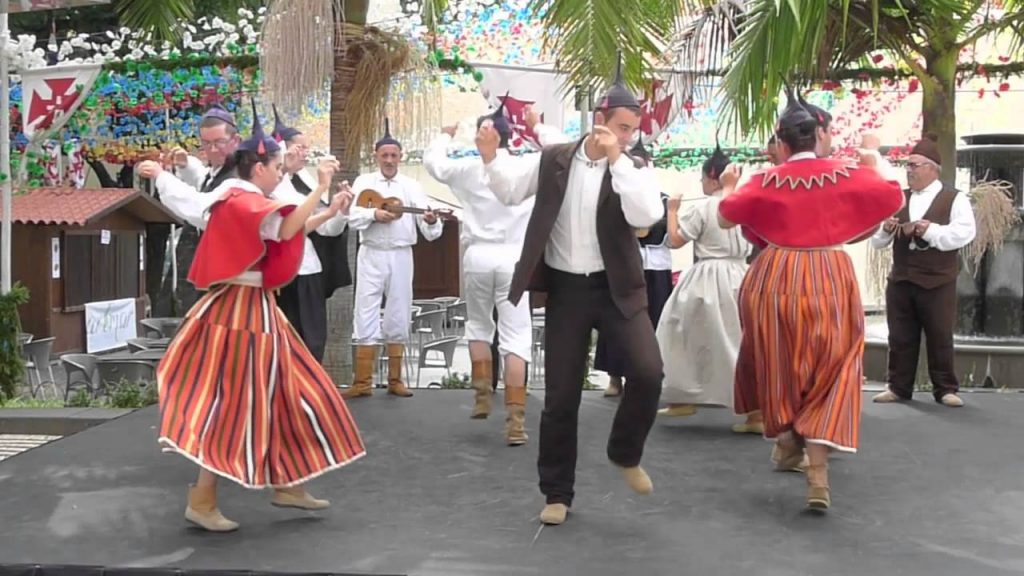Dancing… Madeira Folklore
Madeira Folklore: dancing is a central element of Madeira culture as well as music and singing. There are several dance style on Madeira, imported successively by the different ethnic groups calling Madeira their home.
Madeira was an important port on much used nautical trade routes. Many stopped in Funchal and some stayed on…
Origins of Madeira Folkloric dances
Some believe that the nowadays typical jumps and turns in Madeira’s traditional dances stem from Moorish or African dance movements. Other steps find a source in the more European dances brought by the Flemish, British, Italian or French merchants. Typical Portuguese origins can be traced to the regions of Minho and Algarve.
In other words, Madeira’s dance style stems from a joyous cultural melting pot. However, Madeira’s dances succeeded in developing their own very unique and recognizable style.
Music Instruments
Dancing groups started in nearly all municipalities a little over one hundred years ago. Dancers wear the traditional costumes and it is a true feast for the eyes. These dancers (men and women) are accompanied by musicians playing local instruments. Once such instruments is the Brinquinho. However, other cord instruments such as the machete or braginha, the rajao (a guitar like instrument), and a viola de arame accompany the melody. A triangle and a few other typical instruments used are nicely shown on the picture here below.
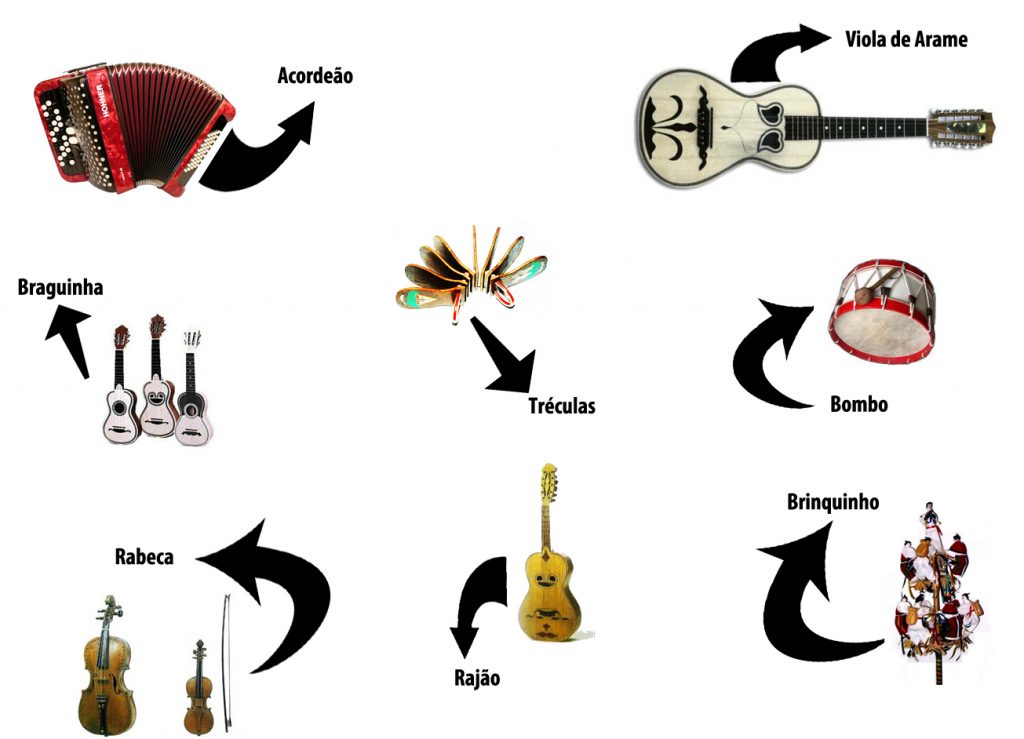
The most famous dance style and song was already touched upon in the post about the Sorcerer of Calheta, namely the Bailinho da Madeira. Madeira Folklore includes other dance styles as well.
Danca de Espedas
This old dance of the swords is a particularity of the municipality Ribeira Brava.
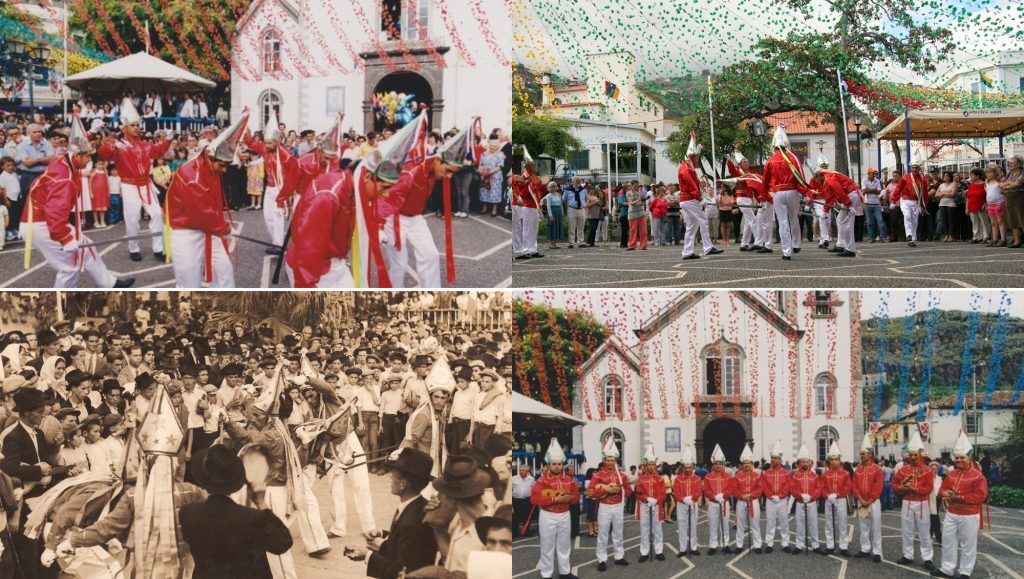
Baile Pesado
This is slow and precise. It resemblances the way the grapes are trampled in the wine press – hard and heavy, at the right pace to stomp raisins. Furthermore, this dance is also a tribute to hard agricultural labor throughout Madeira, particularly during grape harvest and the treading of the grapes.
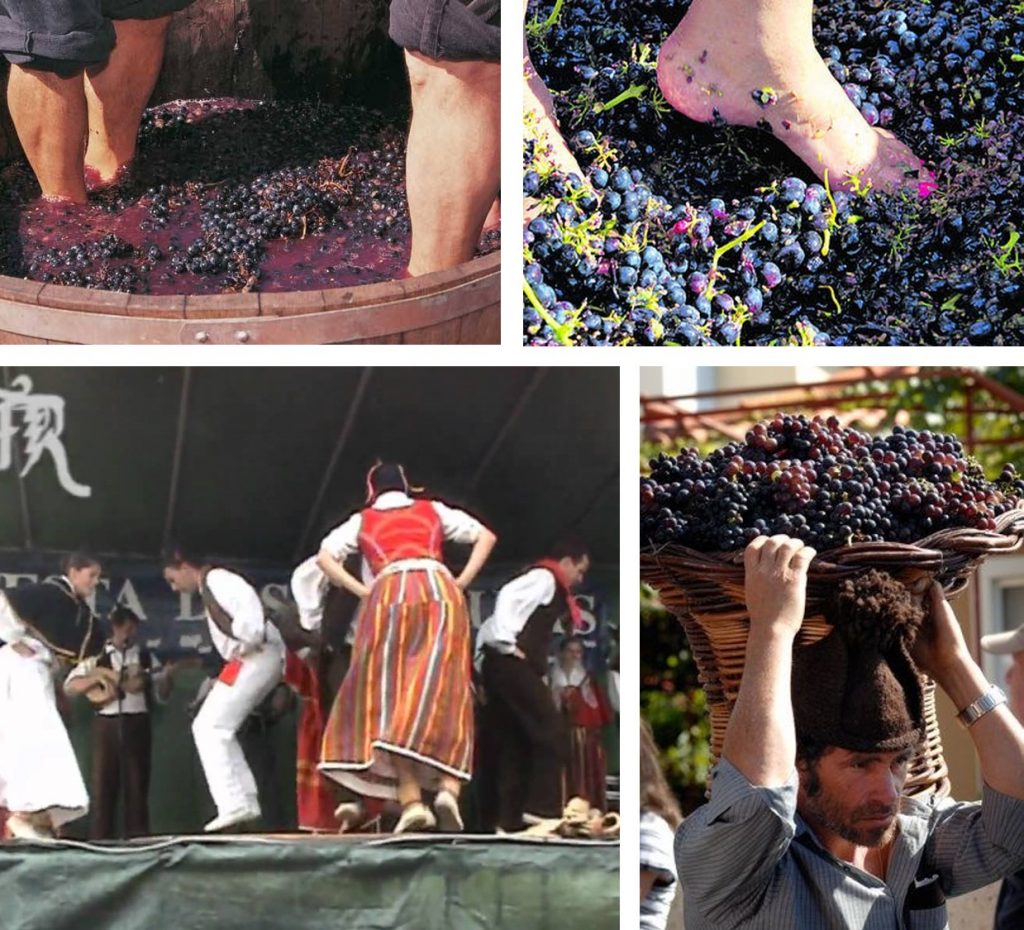
Baile das Camacheiras
This dance is more lively and joyous. Furthermore, it is a couples’ dance. A leader calls out the figures – face à face or vis à vis, in and out etc.. Hence, the choreography of this dance depends on the leader.
Chamarrita
This dance of Moorish origin is rather slow. Hence, the dancers follow each other slowly in a circle.
24 hours Dancing Folklore Festival – Santana
Every year during the month of July, the municipality of Santana organizes a traditional dance festival. This festival lasts an entire weekend. It is the perfect occasion to admire the various dances described above and many more. The “24 Horas a Bailar* events attracts more than 20 groups each year. Furthermore, it is an excellent opportunity to taste local specialties.
